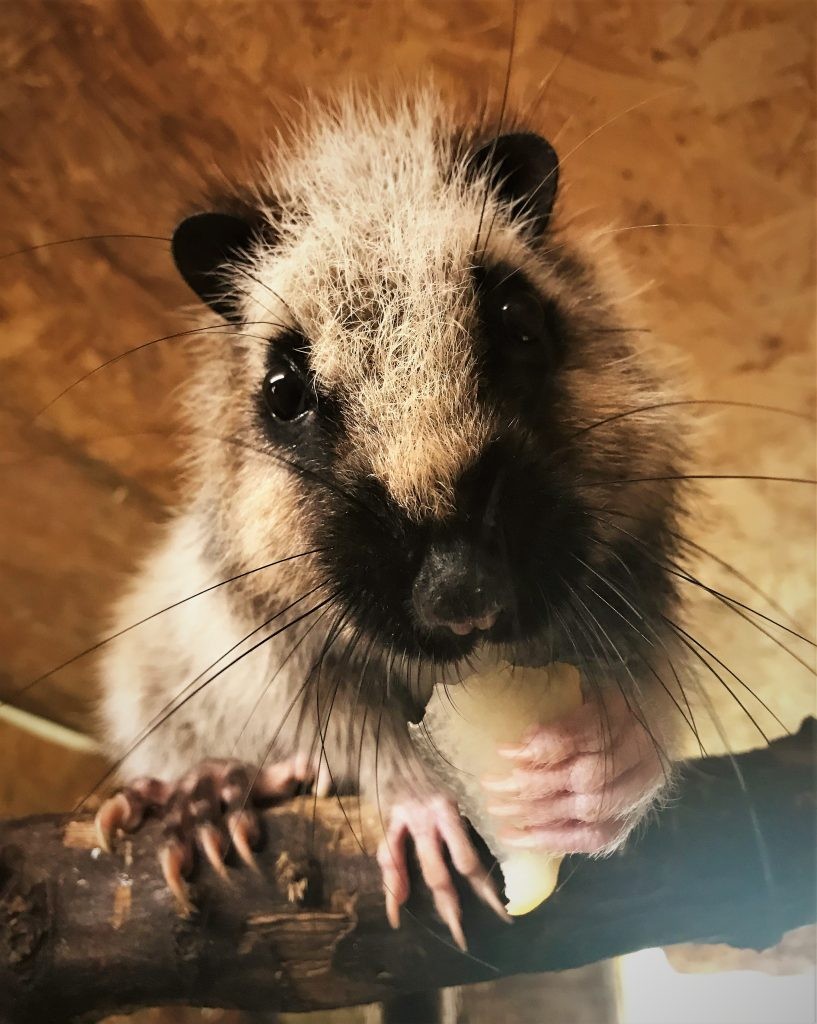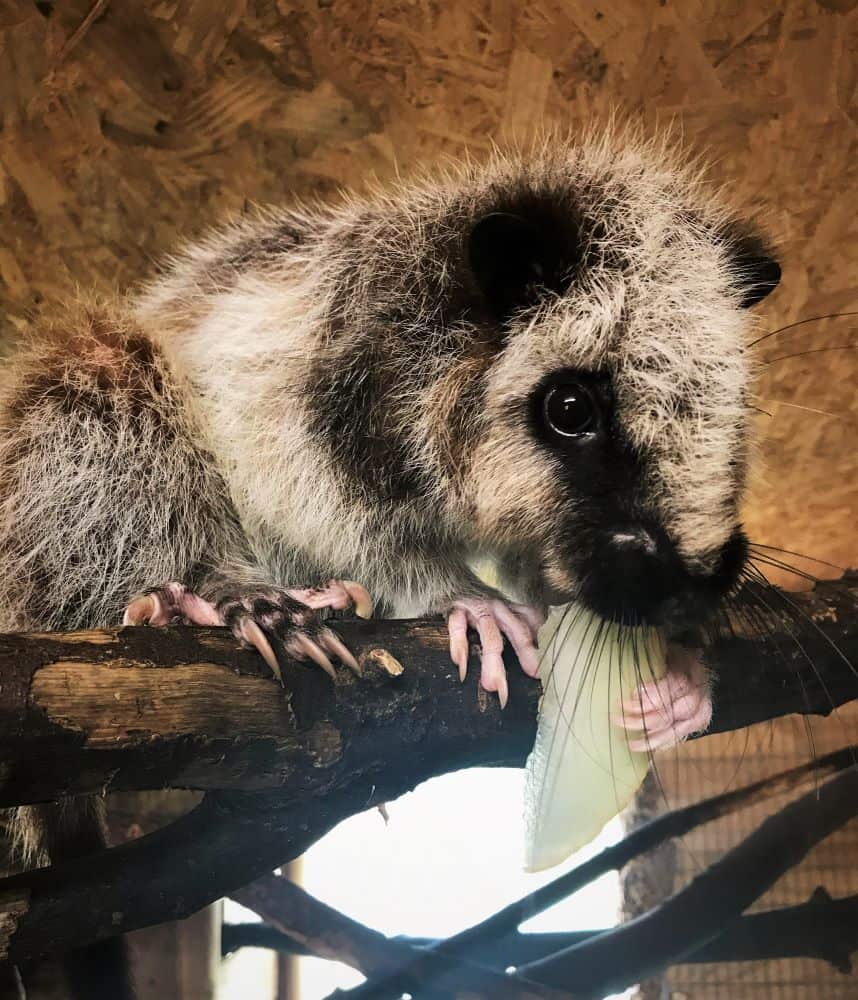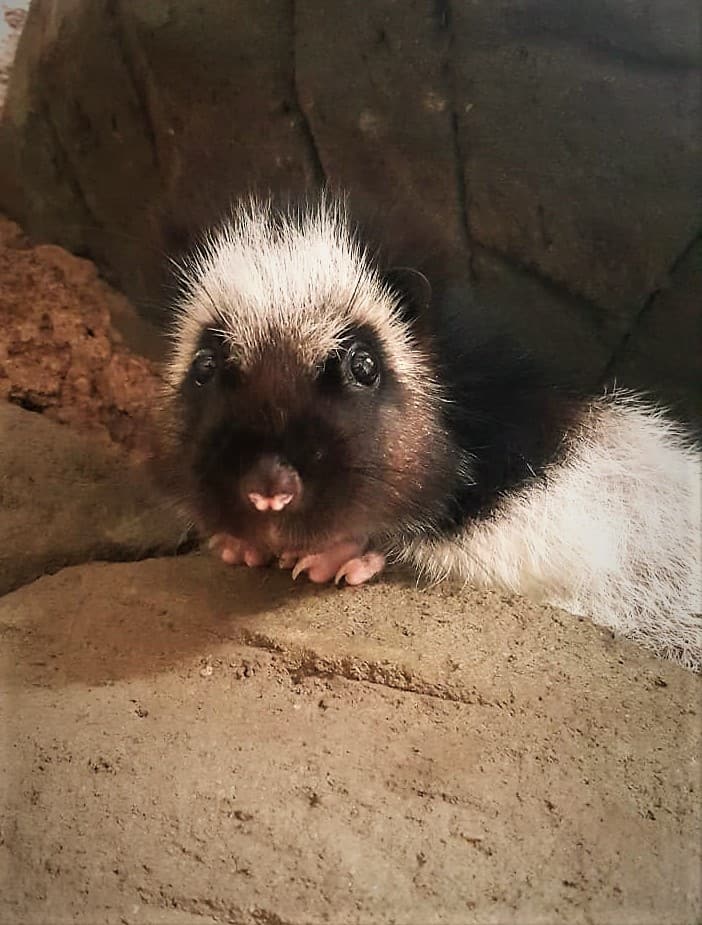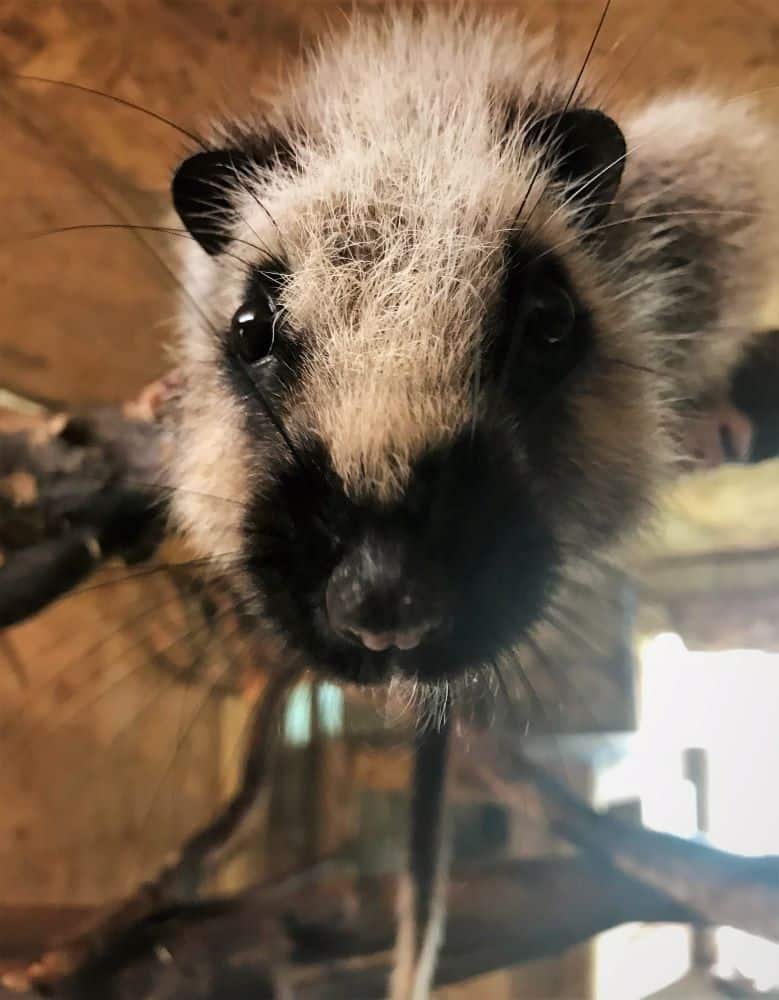In this weeks blog I’ll be informing you all about our Northern Luzon Giant Cloud Rat Phloeomys pallidus, not a common species within animal collections (we are 1 of only 4 collections in the UK to have them).

They are also known as the ‘Cloudrunner’ as they mainly live high up in the canopy of trees, which is where the ‘cloud’ part of their name comes from. These ‘giants’ can measure up to 50 cm (20 inches) in length, not including the tail!
This timid, forest dwelling animal has long, rough fur. Often their coats are a combination of white to pale grey fur with dark brown or black markings on the face and body. They have small ears, long whiskers, a densely furred tail and their large hind feet and long claws make them excellent climbers and

At the park we have a 5 year old female called Betty, she is quite a fiery character, particularly in the mornings. I think this is mainly due to her being ‘hangry’ and wanting her B&B service to be a lot quicker, but as the saying goes all good things come to those who wait!
Once she is tucking into her breakfast her mood mellows and she’s not so short tempered.
This species is endemic to the island of Luzon in the Philippines, where it is found in the northern and central provinces. Giant cloud rats are primarily tree dwelling, spending most of their time high in the branches but they can sometimes be seen moving slowly along the forest floor searching for food. Their diet in the wild is not well known but this herbivore eats young leaves, buds, fruit and crops. Here at Wingham their meals consist of rodent pellets, greens, vegetables and fruit.
Most information about Cloud Rat reproduction comes from animals in human care, because they are such an elusive species to study in the wild. They give birth to one young each year, which is typically birthed in the hollow of a tree or a hole in the ground and the mother carries her young firmly attached to a nipple (an unusual trait for a rodent).
European Endangered Species Programme (EEP)
At the park we are able to boast that we’ve successfully bred from our cloud rats- our first baby was moved on to Chester Zoo and our second baby has moved to our sister site, Sandwich Wildlife Park.

Sadly our male passed away earlier on in the year so for the moment we currently just have Betty. However, she is a part of the European Endangered Species Programme (EEP). The EEP is the most intensive type of population management for a species kept in a European zoo and each EEP has a coordinator who is assisted by a species committee.
The coordinator has many tasks to fulfil such as collecting information on the status of all animals of the species for which he or she is responsible for, producing a studbook, carrying out genetic analyses and producing a plan for the future management of the species. Together with the species committee, recommendations are made each year on which animals should or should not breed, which individual animals should go from one zoo to another and so on.
The northern Luzon giant cloud rat can cause extensive damage to rice crops and are sometimes considered a pest, which means they are regularly hunted for food. They have been eradicated from some regions because of hunting but overall they appear to be able to withstand this pressure and in general they remain common and widespread.
Although they are widespread and locally abundant, population stability is also threatened by the destruction of forest habitats. This species is legally protected from hunting, except by indigenous people using traditional hunting methods and they can be found in several national parks and other locally protected areas.
You can help this species by sharing this blog with others- simply raising awareness about this species helps to contribute to its overall protection.

Come and visit Betty soon in our Pet Village.


